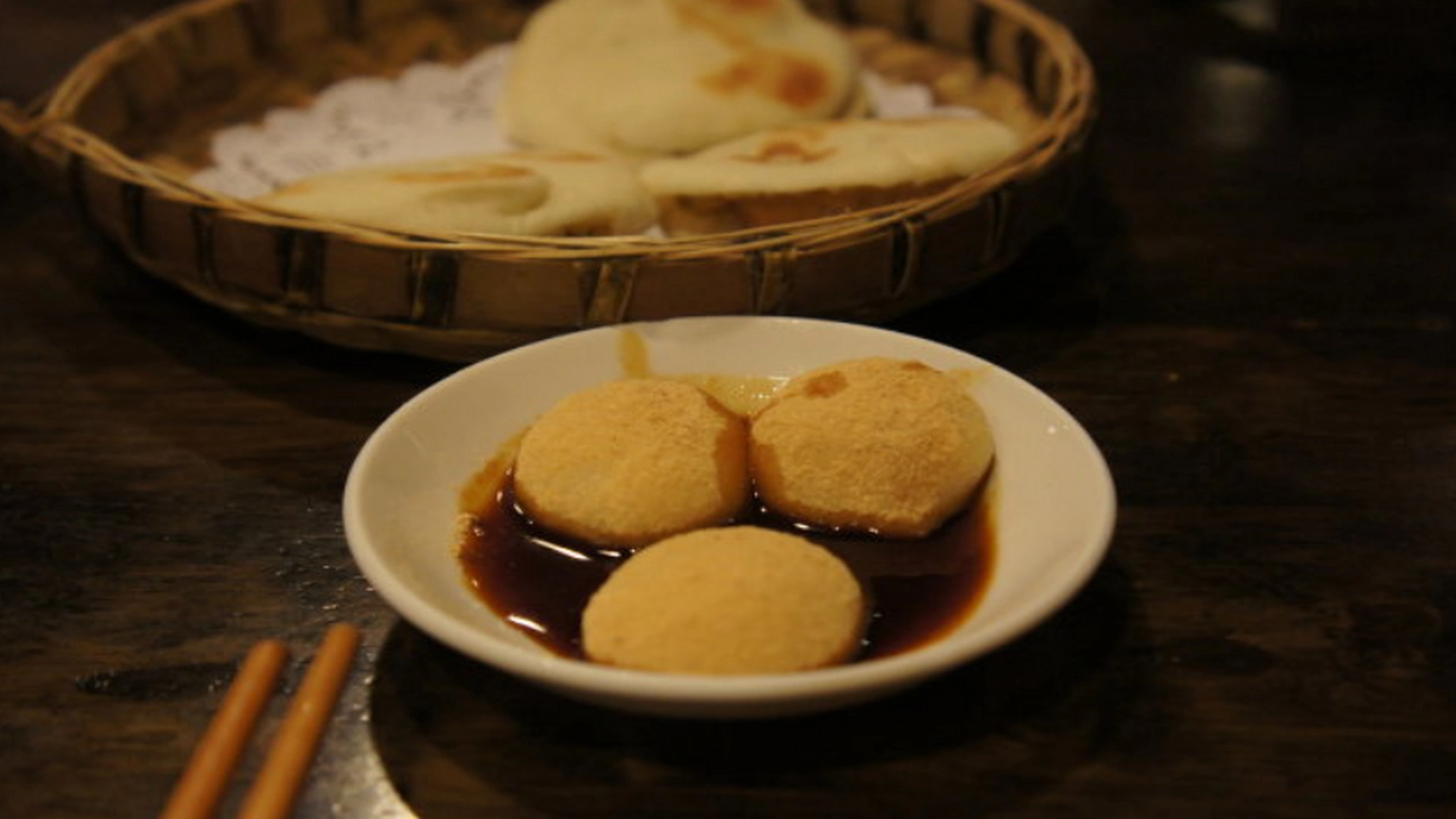The Delights of San Da Pao: A Culinary Journey Through Chengdu’s Traditional Sweet Treat
As a culinary professional, I have the pleasure of delving into the rich tapestry of Chinese cuisine, and today, I would like to share with you the story of a unique dessert from Chengdu, Sichuan Province – the San Da Pao. This dish, with its sweet and sticky charm, holds a special place in the hearts of locals and has a fascinating history that dates back to the Qing Dynasty.
Origin and Cultural Background:
The name “San Da Pao” literally translates to “Three Big Cannons,” which is a nod to the sound the dish makes when it’s being prepared. Traditionally, this treat was used as an offering during religious ceremonies, a practice that has evolved into a beloved street food. The transformation from a solemn ritual to a joyful indulgence reflects the cultural shift and the adaptability of Chinese culinary traditions.
Ingredients and Preparation:
San Da Pao is crafted from a simple yet delightful combination of ingredients: glutinous rice flour, water, and a generous amount of sugar. The process begins with boiling water and gradually adding glutinous rice flour to create a dough. This dough is then divided into small balls, which are coated with more glutinous rice flour to prevent sticking.
The art of making San Da Pao lies in the “throwing” step, where the dough balls are tossed onto a flat surface from a certain height, creating a distinctive “thud” sound that echoes the name. This action not only adds to the visual appeal but also contributes to the texture of the final product.
Taste and Texture:
The result is a dessert that is香甜软糯 (sweet and soft), with a slightly chewy texture that melts in your mouth. The outer layer, slightly crisp from the impact, contrasts beautifully with the tender, sticky interior. The sweetness is balanced, never overpowering, allowing the natural flavors of the glutinous rice to shine through.
Appearance:
Visually, San Da Pao is a sight to behold. The small, round balls, dusted with a fine layer of flour, have a rustic charm that is both inviting and nostalgic. The contrast between the soft, white interior and the lightly floured exterior creates a delightful anticipation for the first bite.
Representative Dishes and Culinary Uses:
While San Da Pao stands on its own as a dessert, it can also be incorporated into a variety of sweet dishes. It can be served with a warm, sweet syrup, or as a component in a dessert soup alongside other traditional Chinese ingredients like red beans or longans. Its versatility makes it a staple in many households during festive occasions.
Culinary Characteristics:
The charm of San Da Pao lies in its simplicity and the joy it brings to those who partake in its consumption. It is a testament to the ingenuity of Chinese cuisine, where even the most humble of ingredients can be transformed into a symphony of flavors and textures. The act of making San Da Pao is as much a part of the experience as eating it, with the sound of the “cannons” firing signaling the start of a sweet adventure.
In conclusion, San Da Pao is more than just a dessert; it is a cultural artifact that has been passed down through generations, encapsulating the spirit of Chengdu’s culinary heritage. Whether you’re a food enthusiast or simply someone with a sweet tooth, San Da Pao is a must-try experience that will leave you with a taste of history and a heart full of joy.
